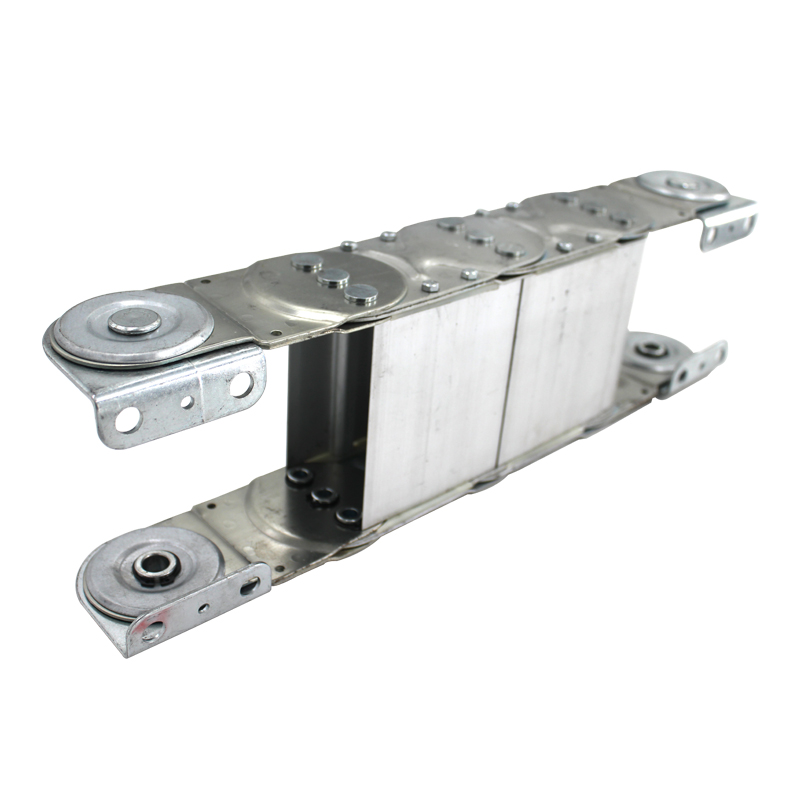cnc drag chain
Understanding CNC Drag Chains A Comprehensive Guide
In the world of CNC (Computer Numerical Control) machining, ensuring the seamless operation of machinery is vital. One of the key components that plays an essential role in maintaining this efficiency is the drag chain. Often overlooked, drag chains are crucial in managing and protecting cables and hoses, enabling CNC machines to operate smoothly and reliably.
What is a CNC Drag Chain?
A CNC drag chain, also known as a cable carrier or energy chain, is a flexible system designed to guide and protect the connection cables and hoses of CNC machinery. These chains are typically made from durable materials such as plastic or metal, allowing them to withstand various industrial environments. The primary function of a drag chain is to prevent tangling and abrasion of cables, providing a safe pathway for energy and data transmission.
Components and Structure
A typical CNC drag chain consists of a series of interconnected links that form a continuous loop. Each link features an open design that allows for easy access to the internal space where cables or hoses can be routed. The chains can be configured in a variety of shapes and sizes, allowing them to adapt to specific machine layouts and operational requirements.
Drag chains can also be divided into two main styles portable and stationary. Portable chains are designed for dynamic applications, where movement is required, while stationary chains are used in fixed installations. The choice between these styles depends on the movement characteristics of the CNC machine and the environment in which it operates.
Benefits of Using CNC Drag Chains
1. Protection One of the primary benefits of drag chains is their ability to protect cables and hoses from wear and tear. In a CNC environment, where machines often operate at high speeds and in tight spaces, ensuring that cables are safeguarded from mechanical damage is essential for preventing costly downtime.
cnc drag chain

2. Organization Drag chains help maintain an organized layout of cables and hoses, reducing clutter around the machine. This not only enhances the machine’s aesthetics but also minimizes the risk of accidents, such as tripping over loose cables.
3. Flexibility Modern drag chains are designed to be highly flexible, accommodating various movements and paths. They can handle multi-dimensional movements, which is particularly beneficial in CNC applications where machines may require complex, coordinated motion.
4. Ease of Installation and Maintenance Installing drag chains is straightforward, and they can be easily opened for maintenance or upgrades. This accessibility allows operators to replace damaged cables without extensive disassembly of the machine.
5. Reduced Strain on Cables With the use of drag chains, cables experience less strain during movement. By providing a designated pathway, drag chains minimize bending and twisting, which can lead to failures and shorten cable lifespan.
Applications in CNC Machining
CNC drag chains are employed in various applications across the machining industry. They are commonly found in CNC milling machines, lathes, and routers where mobile cables or hoses need to be managed efficiently. Additionally, drag chains are utilized in robotic systems, conveyor systems, and other automated processes that require reliable cable management.
Conclusion
In summary, CNC drag chains are an integral component of modern CNC machinery, playing a vital role in ensuring operational efficiency and longevity. By protecting cables and maintaining an organized workspace, they not only facilitate smoother machine operation but also contribute to safety within the workstation. As technology continues to advance and CNC machines become more sophisticated, the importance of drag chains will only grow, making them a critical area of focus for manufacturers and operators alike. Embracing the benefits of drag chains can lead to enhanced productivity, reduced downtime, and ultimately, a more successful machining operation.








